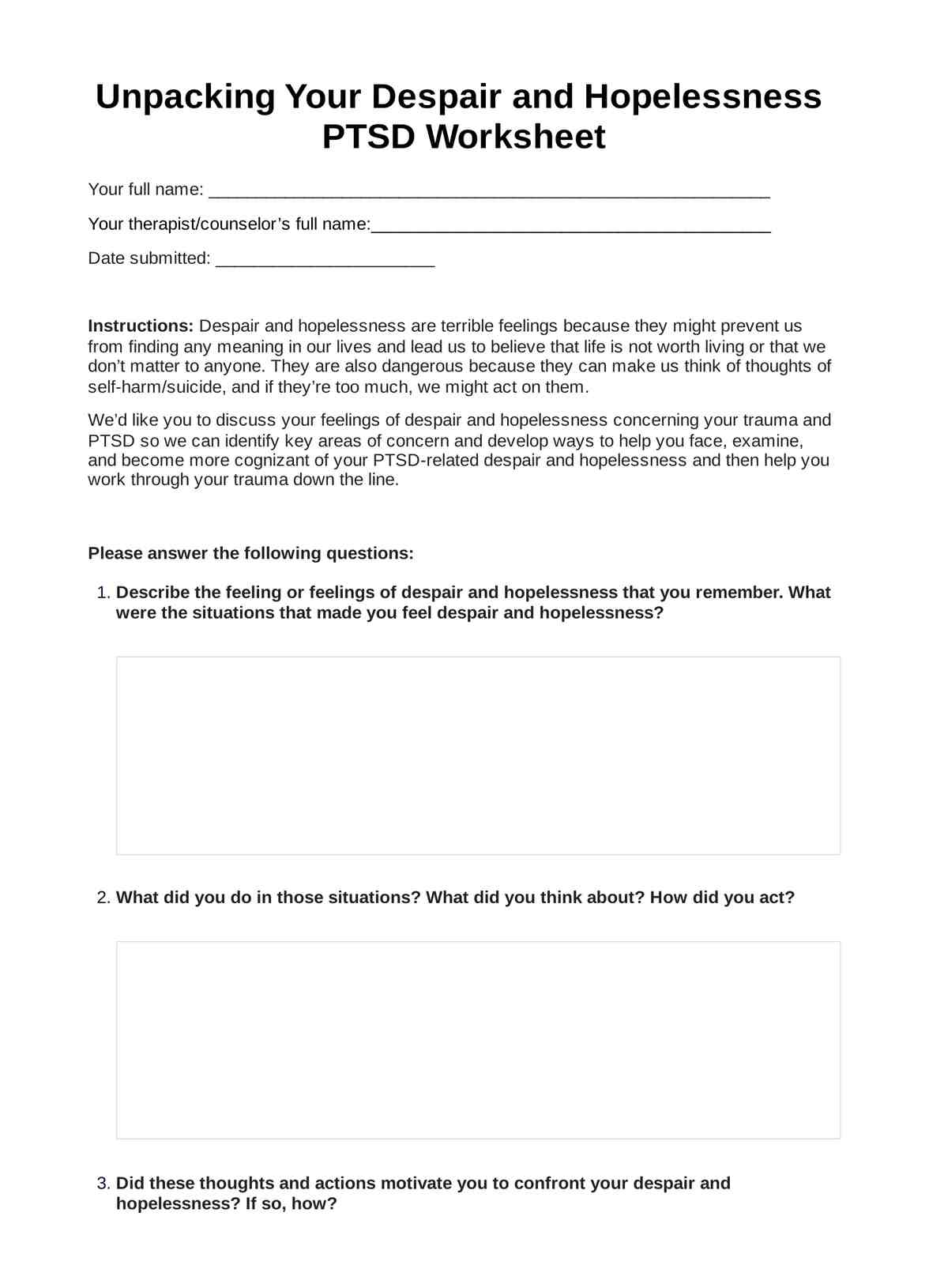It would be best to give the patient the time and space they need to accomplish it. This worksheet asks them to write about their despair and hopelessness, which is hard enough to discuss in conversation. If you need to set a deadline, go with what your patient is comfortable with. It’s best not to give them unneeded pressure to discuss something that already puts them on edge.

Unpacking Your Despair and Hopelessness PTSD Worksheet
Help your patient with PTSD examine their despair using the Unpacking Your Despair and Hopelessness PTSD Worksheet!
Unpacking Your Despair and Hopelessness PTSD Worksheet Template
Commonly asked questions
Based on the instructions, it shouldn’t be. Whatever difficulty they will encounter will come from their PTSD. Thinking about their trauma and its associated memories, feelings, and behaviors might prevent them from talking about it quickly.
Professionals need to ensure that the patients feel that they are in a safe and non-judgmental space and that they can trust the professionals. They should also provide them with the support they need. Doing so will help motivate them to examine their despair and guilt, especially if they know they have someone in their corner.
Here are examples of PTSD worksheets that you can issue alongside the Unpacking Your Despair and Hopelessness PTSD Worksheet:
- Unpacking Your Anxiety
- Unpacking Your Guilt
- Unpacking Your Shame
- Unpacking Your Empathy
- Unpacking Your Spite
- Unpacking Your Pride
- Unpacking Your Trust
Download our templates for those and have them readily available for your patients!
EHR and practice management software
Get started for free
*No credit card required
Free
$0/usd
Unlimited clients
Telehealth
1GB of storage
Client portal text
Automated billing and online payments











